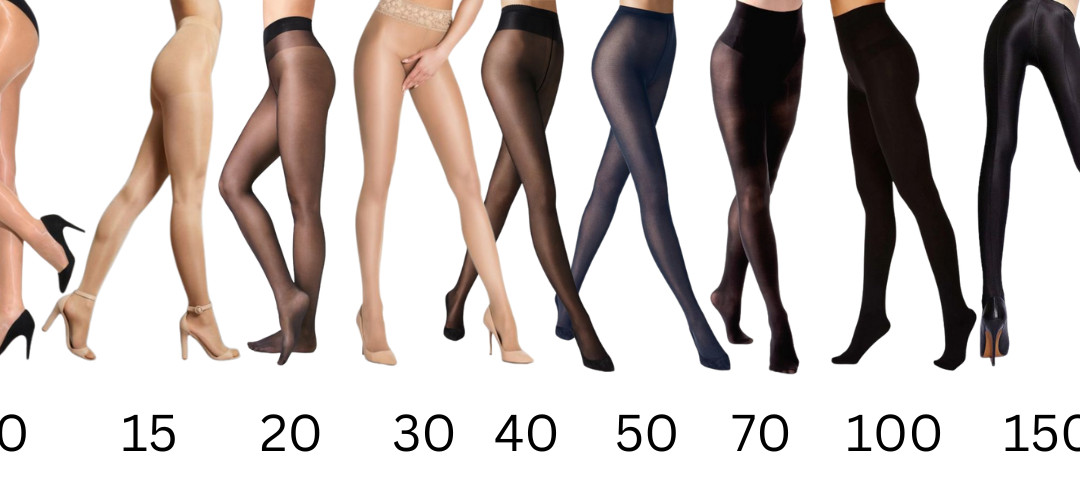When shopping for hosiery, it’s easy to get caught up in choosing colors and styles that compliment your outfit or fit your mood. We get it, but there is an important factor that often gets overlooked – denier.
Understanding denier is important because it can affect the appearance, durability, and comfort of your hosiery. Let’s explore all things denier, from what it is, why it matters and how to choose the right denier on your next hosiery purchase.
What is denier?
Denier is a term used in hosiery to describe the thickness of the fabric used to make the hosiery. More specifically, it refers to the weight of the fibers used to make the fabric and can be used to describe how sheer or opaque the hosiery appears on the leg. A lower denier indicates a finer, more sheer fabric, while a higher denier number indicates a thicker, more opaque fabric.
You’ll see the denier indicated as a number included in the name or description of a pair of tights. For example, the Glamory tights you see here have a 20 denier as indicated by the number next to the name. This set of Glamory tights has a 70 denier. If you compare the two sets of tights you can see how the denier number relates to how sheer or opaque a product may be.
Why does denier matter?
Denier matters because it can affect the appearance, durability, and comfort of the hosiery you buy. By understanding denier, you can more easily find the right look, fit, and feel. Here are some of the key factors to consider when selecting the denier for your next set of tights.
Appearance: The denier of the hosiery can affect how sheer or opaque it appears on the leg. If you’re looking for a more natural, sheer look, then a lower denier may be the way to go. On the other hand, if you want a more opaque look or want to conceal imperfections, then a higher denier may be a better choice.
Durability: The denier can also have an impact on durability. Generally, a higher denier indicates a thicker, more durable fabric that is less likely to snag or tear. However, a higher denier may also feel less breathable and comfortable than a lower denier.
Comfort: The denier of the hosiery can also affect how comfortable it feels on the leg. Generally, a lower denier feels more lightweight and breathable, while a higher denier may feel more constricting and less breathable.
How to choose the right denier
When choosing the right denier for your next hosiery purchase, there are a few key factors to consider:
Occasion: The occasion for which you’ll be wearing the hosiery can play a big role in choosing the right denier. For example, if you’re wearing hosiery to a formal event, you may want to choose a higher denier for a more opaque, polished look. On the other hand, if you’re wearing hosiery for everyday wear or to a more casual event, a lower denier may be a better choice for a more natural look.
Color: The color of the hosiery can also play a role in choosing the right denier. Generally, darker colors like black and navy can be worn at a higher denier without looking too thick or opaque. Lighter colors like nude or white may look more natural at a lower denier.
Material: The material of the hosiery can also affect the denier. For example, sheer nylon hosiery may have a lower denier than opaque cotton or wool hosiery. Consider the material of the hosiery and whether it is available in the denier that you need.
Now that you’re a denier expert, you can confidently go into any store, or online hosiery retailer, and find the perfect pair of tights! Whether it’s funky patterned pair or classic black tights, consider the occasion, color, and material to make sure you feel and look fantastic! Just remember, denier isn’t just about how it looks, but also how it feels. And of course, if you have questions about denier or anything related to hosiery, drop us a line and we’ll be happy to help you out.

